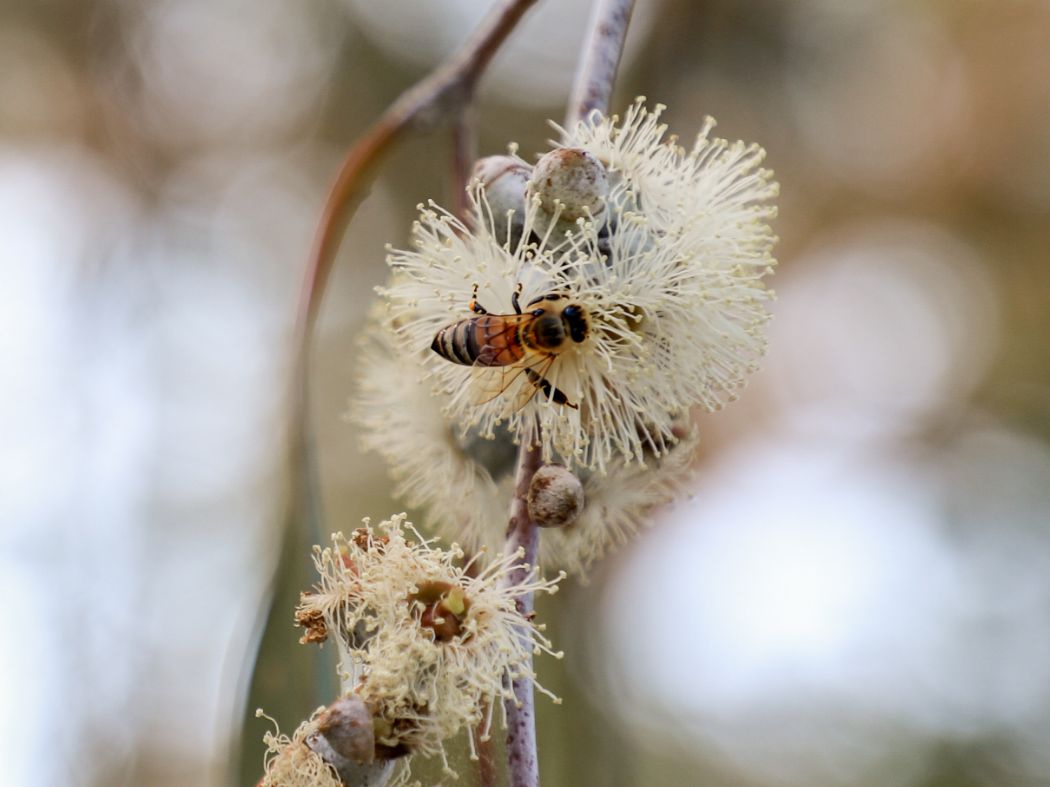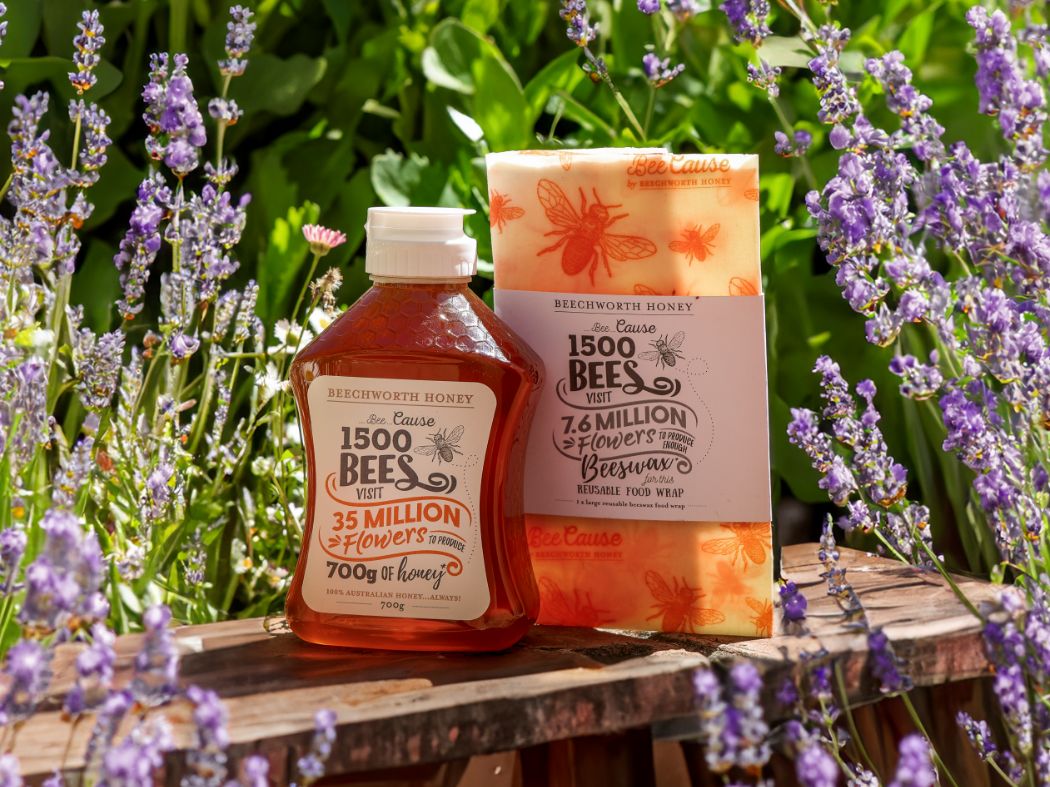How Many Flowers Do Bees Visit to Produce a Bottle of Honey?
Bees are truly awesome. You only have to watch them closely to see their magical manoeuvres. Their contented buzz captures the enthusiasm for their task as they fly purposefully from flower to flower. Their attention is totally focused on the colour, shape, size and aroma of the flowers that lure their agile little wings with precision to land gently on each flower.


Their long proboscis sips the nectar secreted by the flower. Whisper thin it’s ironic that the Latin meaning of proboscis is ‘elephant’s trunk for the taking of food’. The microscopic nature, precision and dedication to gathering nectar could not be further from the size and scale of an elephant.
We wanted to calculate just how many bees it takes to make our Bee Cause Bush Honey 700g bottle of honey so we set about putting into practice our science, mathematical, and logic skills to work it out in detail.
It honestly actually took us quite a bit to work this out and be satisfied that the answer we arrived at made sense. We really did have to exercise our ‘bee nerd’ DNA but hopefully you’ll find the stat’s from our exercise as fascinating as we did.


Bee collecting nectar from Red Stringy Bark (eucalyptus macrorhyncha) flowers.
1. Flower Visits
First we found out that it takes around 300-1000 flower visits to gather a load of nectar. But of course not all scientists agree with that fact. Another scientist in the same publication explained that it takes 1-500 flower visits for a bee to gather her load.
Turns out you could possibly do a thesis on just this alone. But to avoid that, we estimated the midpoint between both answers and arrived then at an estimate of 500 flowers per load which we used for our calculations. Of course this depends on which flower the bees are visiting and its melliferous characteristics along with the effect of weather on the plants ability to secrete nectar.
We then needed to know the amount of nectar a bee can carry in a load. You see a bee has a special stomach, called a honey stomach, which when filled to the brim holds just 40 milligrams of nectar. A milligram is one thousandth of a gram. That’s one teeny tiny stomach! No wonder that proboscis is so whisper thin!


To make 1 gram of honey 50,000 flowers will have been visited.
2. Amount of Nectar
But, nectar is not honey! In fact nectar may be as much as 80% moisture which has to be dehydrated by the bees in the hive through a process of maturation that turns it into honey. Honey contains less than 20% moisture. This means that you effectively need way more nectar in the beginning than you end up with in honey to put in the jar.
For example consider the following: 100 grams of nectar comprises say 80 grams of water and 20 grams of sugars etc. To achieve a reduction to 20% moisture you need to evaporate 75 grams of water leaving 5 grams of water and 20 grams of sugars etc. The % moisture then becomes 5/25 which happens to be 20% and the honey weighs 25 grams.
In our actual example 0.04g of nectar becomes 0.01g of honey if the bee has visited 500 flowers. So, to make 1 gram of honey 50,000 flowers will have been visited. Mind blowing!
For our Bee Cause Bush Honey 700g bottle our maths calculates out at 700g x 50,000 flowers = 35,000,000 flowers visited. Incredible! Yes, that’s 35 million flower visits!


A single hive could be home to 60,000 bees!
3. Number of Bees
Then we ponder how many bees it takes to visit 35 million flowers? One little worker bee can’t do this alone. Sadly she won’t live long enough to do so. Reality is that because of all her sipping and buzzing (and all the other jobs she will do over her lifetime in the hive) a worker bees only lives on average 4-6 weeks, shorter if she’s working really hard to find flowers or is under stress.
We then use the fact that worker bees only gather nectar for part of their life and estimate that it might be reasonable for a bee to collect somewhere between 20,000 and 25,000 loads of nectar in her lifetime. We estimate this because we know that a teaspoon of honey weighs 7.5 grams. And a honeybee only produces 1/12th of a teaspoon (or 0.625 grams) of honey in her life.
Because we prefer that bees have a bit easier life we think it’s reasonably conservative to estimate with reasonable scientific accuracy that 1500 bees visit 35,000,000 flowers to produce 700g of honey. Rounding down somewhat makes us feel comfortable that our numbers are pretty conservative.
We’d prefer to be conservative because we know bees can’t always find flowers and at times will encounter bad weather which can impact the nectar flow so we’ve concluded that it takes 1500 bees to visit in total 35,000,000 flowers to produce a 700g bottle of honey.


What about beeswax?
If you thought honey production was intriguing lets take a quick look at beeswax. At just 12 days of age and for only the next five days of their lives honey bees secrete beeswax from four pairs of wax glands underneath their abdomen. Nature programs these eight glands to work precisely and effectively for five days and five days only. Honey bees use beeswax as their miraculous engineering structure that contains their baby bees and their food stores.
During wax production worker bees consume 8 times the amount of honey to produce beeswax (8kg honey:1kg beeswax). We know that we need 19g of beeswax to make one beeswax wrap. This means, if a honeybees was to consume our 700g bottle of honey, they would produce 87.4g of beeswax which allows us to produce 4.6 beeswax wraps. If 1500 bees visit 35,000,000 flowers to produce a 700g bottle of honey, 1500 bees need to visit 7.6 million flowers to make 152g of honey and to produce 19g of beeswax for one beeswax wrap.


1 out of every 3 mouthfuls of food depends on bees for pollination.
We hope that you’ve found our calculations logical. Along the way, we think you’ll agree our numbers are all based on educated estimates and widely recognised and respected references. We bothered to double check our facts and logic with some of our mathematical and scientific colleagues who debated and discussed each assumption we made.
We know you’ll find all sorts of wild numbers amongst the minutiae of the internet but for each of these, we were not able to find any breakdown of the calculations used to arrive at the claims. To us, this matters. We always like to know how our honey comes to be from each and every flower right through to the hive.
Traceability matters and bees matter. They always will!
“These calculations make it really clear that the real job of bees is not that of gathering nectar to make honey but rather the work of pollinating each flower that they visit to bring us much much more than this jar of honey. ”
Now think about the 35,000,000 seeds which were fertilised through the pollination that took place while gathering this 700g bottle of honey. Now that is what really matters. From seeds food grows, flowers grow, biodiversity grows and nature thrives. Bees make all this happen.
Now I wonder which of the fruits, vegetables, nuts and seeds we’re eating were visited by the same bees that made this jar of honey? Mind blowing!
Enjoy this beautiful honey! Marvel at the resulting fruits, vegetables, nuts and seeds!
– Jodie
Gary, N. 2015 “The Hive & the Honeybee – Dadant”, p. 298
Trayner, K. 2015 “The Hive & the Honeybee – Dadant”, p. 675

